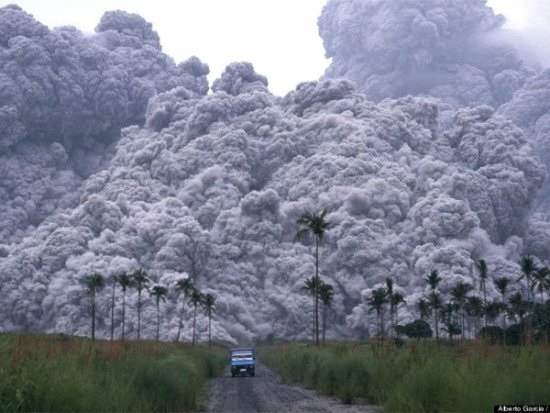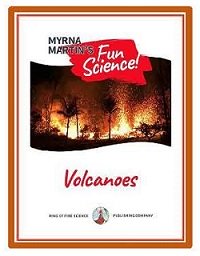1991 Eruption of Mount Pinatubo
two largest eruptions of the 20th century
1991 Mount Pinatubo eruption
The Mount Pinatubo eruption on June 15, 1991 was the second largest eruption of the 20th century. It was the largest volcanic eruption near a densely populated area during the 20th century.
1912 Novarupta volcano eruption
The
1912 eruption by Novarupta volcano was the largest eruption of the 20th century. The Novarupta eruption occurred in a
remote area of Alaska where very few people lived. It was four years before an expedition explored eruption and the region where it took place.

People fleeing the pyroclastic flows during the 1991 eruption
Pinatubo thought extinct
The mountain awakes after 500 years
Pinatubo had not erupted for 500 years prior to its climactic
eruption in 1991. Scientists had thought the dormant volcano was extinct and
would never erupt again. Instead it was a sleeping giant with magma quietly collecting 20 miles beneath the volcano.
The mount awakens with a 7.8 earthquake
The volcano began awakening in 1990 when a 7.8 earthquake shook
the area. The following spring thousands of earthquakes and tons of
sulfur dioxide were emitted by the volcano warning scientists and people
living near the volcano that an eruption was coming.


Click for More Information and to Order
evacuation prior to the eruption
Clark Air Force Base evacuated
Scientists used information from the 1980 eruption of Mount Saint
Helens to help them predict what might happen on Mount Pinatubo that
spring. The Clark Air Force Base was evacuated just five days before the
eruption.
Red zone evacuated June 12th
On June 12th just three days prior to the eruption the red
zone was extended and 58,000 people evacuated the area. Over 800 people who stayed behind and refused to leave their homes were killed during the eruption.
Eruption during a typhoon
Typhoon Yunya
Typhoon Yunya was moving through the area on June 15 during the eruption. The initial eruption on
June 15 sent an ash plume twenty-two miles into the atmosphere.
Rain and ash caused roofs to collapse
Closer to the volcano swirling winds and rain from the storm
caused the ash to fall onto the roofs of people living near the volcano.
The heavy rain soaked ash caused many roofs to collapse killing over
800 people.
Billion dollars in damage
Pyroclastic flow caused by the eruption
Pyroclastic material deposited by pyroclastic flows in the valleys below the volcano still measured over 482 °C five years later.
Lahars during and after the eruption
Lahars, volcanic mudflows, carried ash that fell on the upper reaches of the volcano into the valleys covering entire villages near the volcano. Over a billion dollars in damage occurred as a result of the eruption.
Worldwide effects due to the eruption
Aftermath of the eruption
Sulfur dioxide spewed into the atmosphere during the eruption. It
combined with water and oxygen in the atmosphere creating sulfuric acid
which triggered ozone depletion over the South Pole. It also lowered
temperatures worldwide in 1992 and 1993.
KIDS FUN Science Bookstore
Check out Myrna Martin's award winning textbooks, e-books, videos and rock sets. The Kids Fun Science Bookstore covers a wide range of earth science topics. Click here to browse.










